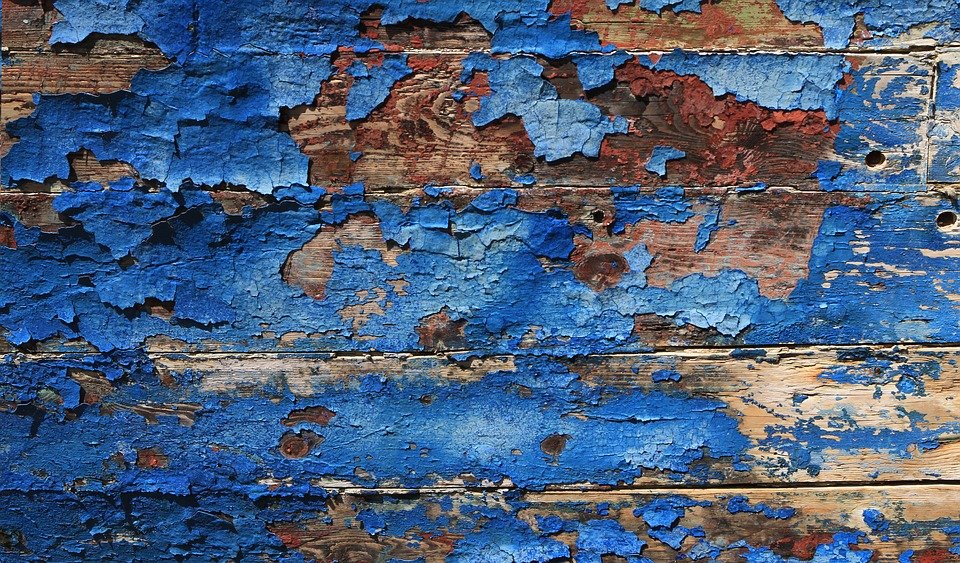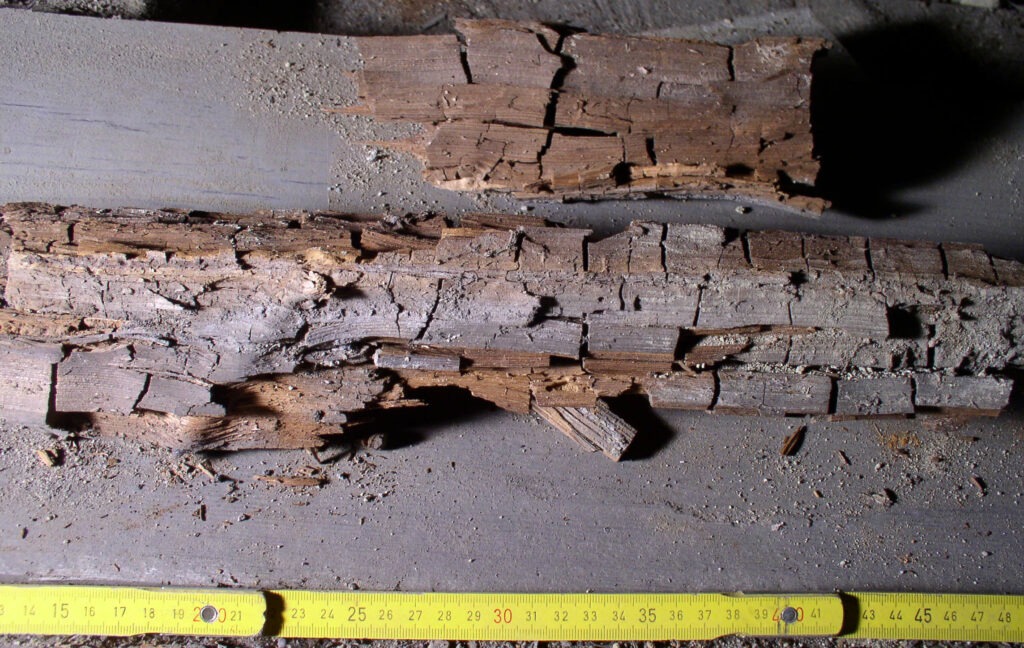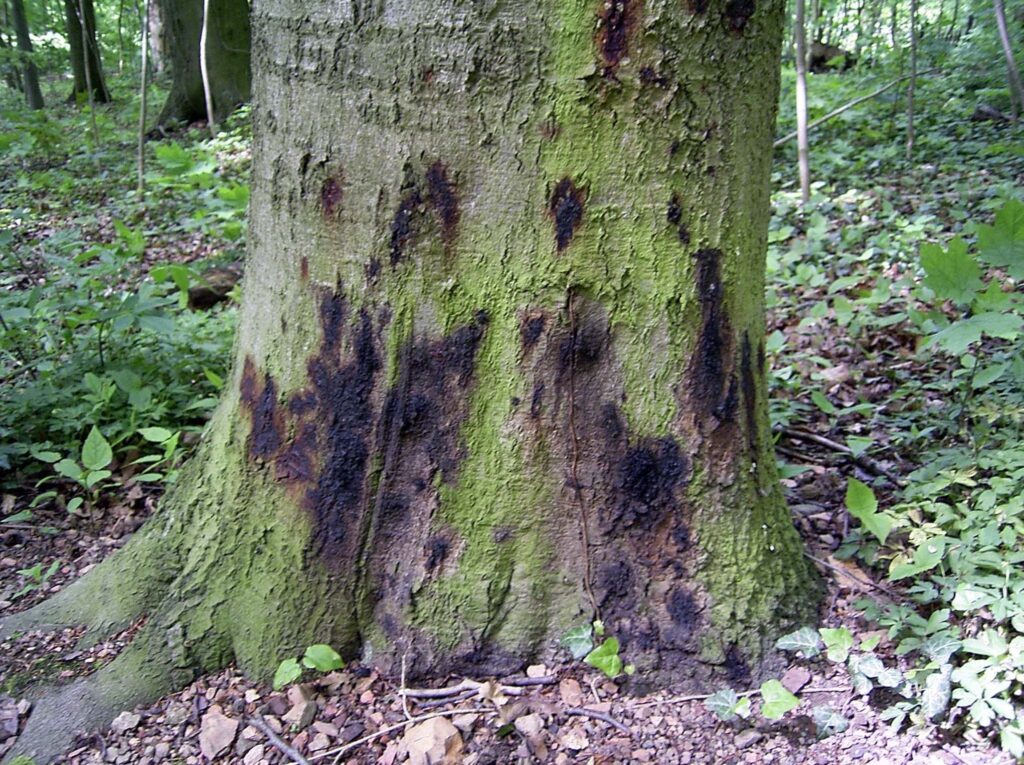More than an annoyance, rotten wood is also a health hazard and can lead to structural failure as a result of advanced deterioration. In this article, we’ll take a look at how you can identify wood rot. But, before we do, let’s take a look at wood rot in all of its forms.
We felt it might be helpful to look into dry rot, wet rot, and other forms of rot that may make your wood appear bad and eventually ruin it. This is important in protecting your wood stocks and identifying when any load bearing wood elements may need to be replaced. Before you go out to identify wood rot, make sure you protect your carpentry business with insurance for carpenters.
Wood rot fungi exist in a variety of shapes and sizes, but they always eat moist wood. Take, for example, brown rot, which is a primary cause of deterioration in dead wood, or the Honey Fungus, which colonises and kills living trees. Some fungi grow on the wood and eat it, effectively ruining their own habitat. Others attack the carbohydrates in wood, while others target lignin, the organic compound that makes plant cells stiff.
How is wood rot classified?
Soft rot, brown rot, and white rot are the most prevalent varieties of wood decay fungus, and since they each carry their own set of damaging enzymes, they can affect the wood in different ways.
Brown Rot
Brown rot is one of the most common causes of wood rot.
Brown rot fungus use hydrogen peroxide, a product of broken-down hemicellulose, to break down cellulose. It’s a small chemical that seeps into the wood and quickly spreads. The wood shrinks, turns a terrible brown colour, and eventually fractures into individual cubes, all of which are weak and brittle.
Serpula lacrymans, often known as “genuine” dry rot, and Coniophora puteana, a cellular fungus that destroys timber in structures, are two species of brown rot fungus that do the most harm to wood.
Experts used to divide wood rot into dry and wet categories; however, this was inaccurate because all rotted wood is moist or has been wet at some point. Brown rot is very often referred to as “dry rot” because it causes wood to become dry and crumbly, although this isn’t quite correct because wood must be moist in order to decay. As a result, the phrase “dry rot” is often used to refer to certain brown fungi that cause the brown rot.
Soft Rot
Soft rot is a fungus that thrives in severe environments and is seldom found indoors.
Soft rot fungi undertake their damaging work by secreting the enzyme cellulase, which breaks down cellulose and creates microscopic holes inside the wood, which gradually discolour and split, similar to brown rot.
Soft rot fungi, in general, may grow under conditions that are too hot, wet, or cold for their brown or wet rot cousins. They can even harm the bark, which is famously difficult to disintegrate due to its high tannin content. Chaetomium and Ceratocystis are common variations, although they’re not the greatest offenders. White rot fungus, one of the most aggressive and effective decomposers of all, takes the top spot for mayhem and chaos.
White Rot
Some white-rot fungi degrade both lignin and cellulose, leaving the wood in a dreadful wet, mushy, sponge-like, or stringy state with a sickly white or yellowish colour. Others focus solely on lignin, employing strong enzymes such as laccase. White rot can include a variety of enzymes, some of which are capable of oxidising lignin. Take, for example, the Honey Mushroom, which, despite its attractive name, assaults living trees and does extensive harm.
The Turkey Tail and Artist’s Conch are two more white-rot fungus varieties that are equally interesting and weirdly lovely. Some are even edible, such as the world-famous Shiitake mushroom, which is appreciated for its delicate flavour.
The most common causes of rotting wood are:
- Wood coming into touch with the soil (there should be at least six inches of space between the wood).
- Lawn sprinklers that aren’t well-placed and drainpipes that aren’t well-fitting keep the wood damp.
- Too much vegetation against the structure, which traps moisture.
- Leaky pipes and clogged drains
- Lack of ventilation. This is a prevalent problem in new-build homes due to their superior insulation.
- Water accumulating beneath the structure.
- Water seeping in due to roof deterioration.
- Wooden decking that has been neglected.
How do I determine if there is rot in the wood?
Poking an area for rot is really the simplest and most effective technique to find out whether it’s rotten. To the touch, rotted wood is squishy. To test the region, use a sharp item such as a screwdriver. The wood is generally not rotting if the tip of the tool dips in less than 1/8″.
You don’t need to take any action if the region is damp but not squishy. However, do everything you can to determine the source of the dampness! Make sure the area doesn’t get any wetter.
Other signs to determine wood rot
If left untreated, wood rot is a problem that affects a lot of houses and can result in significant structural damage. Homeowners should watch for several indications of wood rot, such as exterior damage, wood damage, fungal growth and spores, musty odors, flaking paint, excessive dampness, and insect activity.
One of the most typical indications of wood rot is exterior damage. This can involve flaws in the siding, roofing, window, door frames, and other outside components of the house. This kind of damage sets up the ideal environment for water infiltration, which results in water damage and the development of the fungus wet rot.
Damage to the wood, such as discoloration, size reduction, fissures, and splintering, is another indication of wood rot. The cellulose in the wood is weakened as rot spreads, making the wood softer, darker in color, and smaller in size. Eventually, the damaged wood will be unable to maintain its structural integrity, resulting in cracking and disintegrating. A musty, earthy smell frequently signifies fungal deterioration, and peeling paint may indicate rot underneath. Additionally, termites, carpenter ants, and excessive moisture in rooms like the bathroom and laundry room can be indicators of wood rot.
Preventing wood rot
1. Check water isn’t overflowing from a gutter
Gutters overflow most of the time because they are clogged with leaves and need to be cleaned. The gutter can also peel away from the fascia, allowing water to fall behind it. Examine the gutter above the troubled region. Check to see water isn’t accumulating due to blockages.
2. Water might be splashing up from the ground
This is the most common reason for moist corner boards. Rain pours down from the sky, bounces off a hard surface, and soaks the wood.
Install aggregate drainage material, such as mulch or stone, to remedy this problem. Alternatively, to redirect water away, install an aluminium diverter on the roof above the area of concern. Once you have taken steps to reduce the amount of water that reaches the issue, let it thoroughly dry and then caulk and paint it with a moisture barrier to adequately preserve it.
3. Use a dehumidifier or exhaust fan
Use a dehumidifier or exhaust fan in rooms or regions of the house with excessive moisture content to help eliminate the threat. Increasing airflow in these locations is also beneficial.
4. Proper maintenance is the key
You can prevent rotten wood by keeping your home’s outside spotless and swiftly correcting any issues with the wood, paint, or roof. To decrease the impact of rain, awnings should also be built over outside doors and windows.




